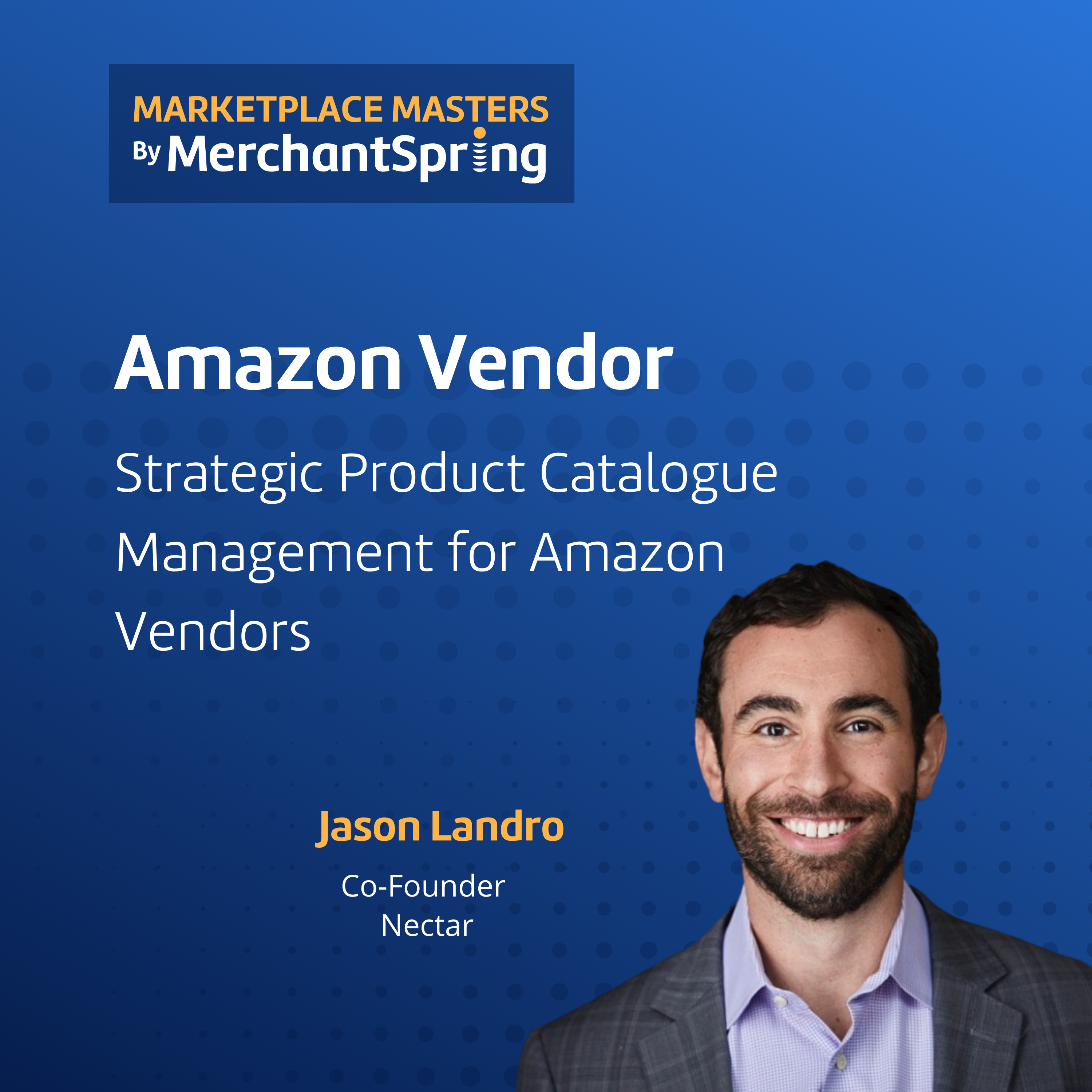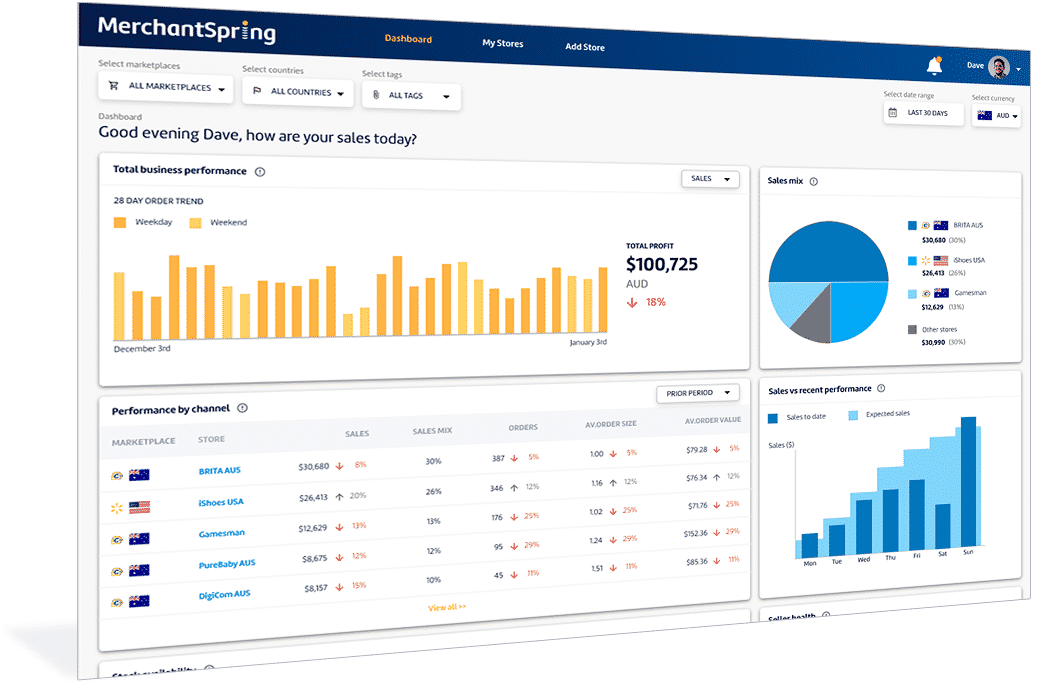Winning Strategies for Streamlining Your Amazon Vendor Catalogue
Overview
In this episode, Jason Landro, the co-founder of Nectar joined Paul Sonneveld and discussed how to navigate the unique challenges of managing your product portfolio and catalogue and driving profitability as an Amazon Vendor.
Understanding the Strategic Framework

To effectively manage your product portfolio and catalogue on Amazon, it is crucial to start with a macro-level view. Jason Landro, the co-founder of Nectar, suggests focusing on three main areas: inventory, content optimization, and advertising spending/promo funding. By allocating resources to these key areas, you can ensure a comprehensive approach to managing your catalogue.
“And I think there's kind of three buckets that you want to focus on at the outset. So inventory, it's both allocation, so what you're dedicating to the channel and being able to manage it, as well as content optimizations and advertising spend/promo funding. So those are kind of the three main buckets of kind of the work that goes into the catalogue, you know, managing your catalogue so to speak. ” - Jason Landro, Co-Founder, Nectar
Inventory Management
Managing inventory involves both allocation and content optimization. It is essential to dedicate inventory to the channel and cut off resellers to maintain control over your products. Additionally, optimizing content, such as product descriptions and images, plays a vital role in driving sales and improving visibility.
Content Optimization
Content optimization involves fine-tuning your product listings to improve search rankings and conversion rates. This includes optimizing titles, descriptions, images, and other elements to make them more appealing to customers. By prioritizing content optimization, you can enhance your product's performance and increase sales.
Advertising Spending and Promo Funding
Amazon's emphasis on advertising as a profit driver makes it crucial to allocate resources to advertising spending and promo funding. By leveraging Amazon's advertising platform, you can drive brand growth and increase market share. However, it is essential to align your advertising efforts with your content optimization strategy to maximize results.
Prioritizing Your Product Portfolio
“…you need to prioritize the products that you want to place your focus on. And that, what we do is we actually tier them into three groups. ”
When managing a large product portfolio, it is crucial to prioritize your efforts. Jason Landro suggests tiering your products into three groups: tier one, tier two, and tier three. Tier one products have the most potential for growth and should receive the most in-depth efforts, including major content overhauls and increased advertising spend. Tier two products require a moderate level of attention, such as SEO improvements and copy updates. Tier three products should receive the minimum effort necessary to maintain performance.
Measuring Success and Evaluating Results

To measure the success of your efforts, it is essential to set goals and track key performance indicators (KPIs). These KPIs may include sales growth, conversion rates, and traffic trends. By regularly evaluating your progress and adjusting your strategies, you can ensure that your efforts are driving the desired outcomes.
To excel in strategic product catalogue management as an Amazon vendor, several key practices can make a significant difference in your approach:
“So obviously MerchantSpring is one option for reporting and understanding where you're coming from and where you're trying to go.”
Firstly, consider leveraging analytics tools like MerchantSpring. These robust platforms automate data analysis, furnishing you with invaluable insights into your performance. They enable you to track essential Key Performance Indicators (KPIs), identify emerging trends, and facilitate data-driven decision-making.
“So content creation and advertising management and catalogue management and operational performance. Those are very different skill sets and typically are owned by different departments in an organization.”
To ensure a streamlined process, establish clear ownership of your catalogue management within your organization. Designate a dedicated individual responsible for overseeing this vital task. Have those orchestrate efforts across various departments, ensuring accountability and efficiency.
“So again, if you're going to do it yourself, start small. You don't have to tackle everything at once. ”
When embarking on this journey, it's wise to begin with a small-scale approach. If you're tackling the catalogue management process internally, start with a handful of products and then gradually expand your scope. This incremental approach allows you to learn and fine-tune your strategies before taking on larger challenges.
Lastly, when optimizing product titles, strike a balance between including relevant keywords for SEO purposes and maintaining readability for customers. Consider breaking down titles into manageable chunks, with a particular focus on the first 35-45 characters to cater to mobile optimization. This approach ensures that your product listings are not only search-engine friendly but also customer-friendly, maximizing their effectiveness.
In Conclusion
Managing your product portfolio and catalogue on Amazon requires a strategic approach that encompasses inventory management, content optimization, and advertising spending. By prioritizing your efforts, measuring results, and utilizing tools like MerchantSpring, you can drive profitability and improve marketplace performance. Remember to continuously evaluate and adjust your strategies to stay ahead in the ever-evolving Amazon ecosystem. As Jason Landro suggests, take a step back, think macro, and tackle the unique challenges of managing your product portfolio with confidence.












.png?width=352&name=logistics%20in%20north%20america%20(1).png)


Add a Comment